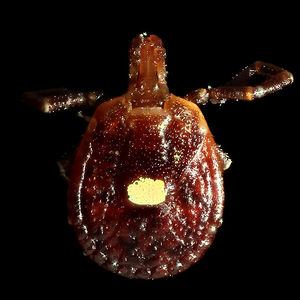We need you! Join our contributor community and become a WikEM editor through our open and transparent promotion process.
Ehrlichiosis
From WikEM
Contents
Background
- Bacterial infection of the family Anaplasmataceae common in mammals such as cattle, dogs, sheep, goats, and horses[1]
- Spread by the Lonestar tick (Amblyomma americanum)
Clinical Features
- Fever, chills, headache, malaise, myalgias, nausea, vomiting, diarrhea, conjunctival injection
- Up to 60% of children may have a rash (30% of adults)
Differential Diagnosis
Tick Borne Illnesses
- Babesiosis
- Ehrlichiosis
- Lyme
- Rocky mountain spotted fever
- Tularemia
- STARI
- Heartland virus
- Tick paralysis
- Murine typhus
Evaluation
- Peripheral blood smear[3]
- Obligate intracellular organism
- Smear shows intracellular parasites only 20% of time
- PCR
- Most sensitive in first week of illness
- Indirect Immunoflorescence Assay'
- Gold Standard
- Negative 85% of time in first 7 days of illness
- Compare 2 samples drawn at different times
- 4 fold increase in titers of second draw is positive
- Enzyme Immunoassay
- Qualitative tests, not quantitative
- Leukopenia, elevated transaminases, thrombocytopenia often present
Management
Doxycycline
- Adults: 100mg PO/IV BID x 14 days
- Children: (under 45 kg): 2.2mg/kg body weight twice a day
Disposition
- most cases of Ehrlichiosis are treated as an outpatient

